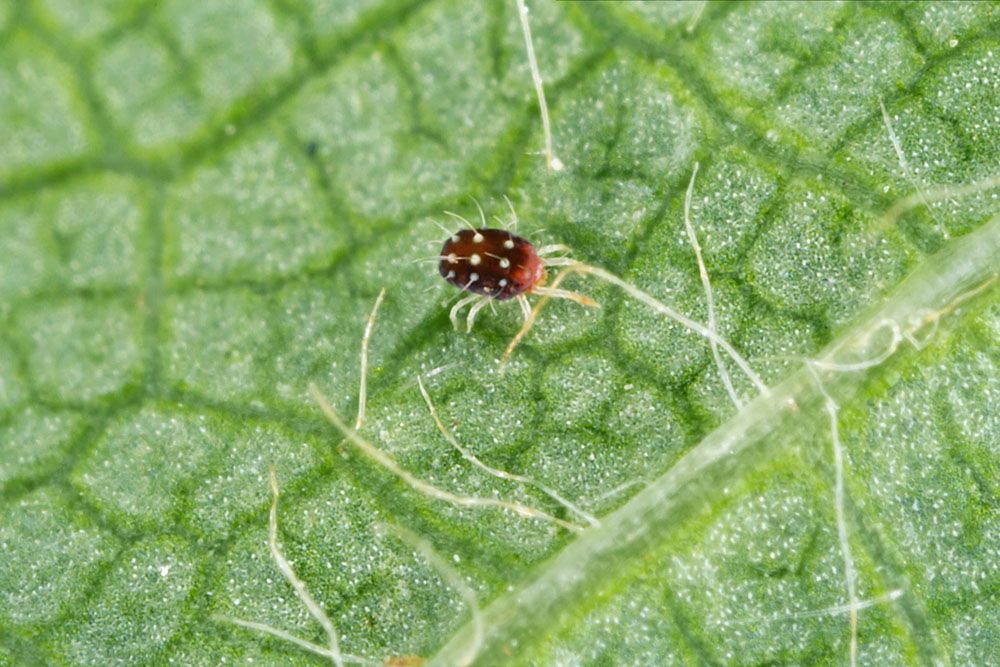
European Red Mite – Panonychus ulmi
European Red Mite: Appearance, Territory, Damage and Life
Latin name: Panonychus ulmi
Appearances: The elliptical bodies of adult female ERM varies in color from bright to brownish red, are about 1/64-inch long (0.4mm), and have four rows of curving spines on their backs. Males have an abdomen that is more pointed than curved, slightly smaller, and lighter in color. Adults, both sexes, have eight legs, whereas newly hatched nymphs only have six legs. Eight legs appear in later nymphal stages. Eggs are laid on leaves during the summer and may only be seen under a microscope as a single, translucent spherical with prominent white stalks. Bright red overwintering eggs are placed in cracks in twigs or bark. The diameter of an egg is just approximately 1/200 of an inch (0.13mm).
Host plants: However, other hosts include rose, black locust, elm, hawthorn, privet, lilac, chestnut, and alder buckthorn. It is most frequently a problem on fruit trees like apple, pear, plum, prune, and cherry trees.
Territory: It was originally noted in Oregon in 1911 and has since spread far across both the United States and Canada.
Damage insect caused: ERM consume leaves. Leaf color may fade or turn dark when populations are high (a condition referred to as “bronzing”). This may result in a decreased return bloom the next season as well as fewer fruit, fallen fruit, and poorer fruit quality. The more severe the damage will be to the health of the tree, the sooner the foliage is injured (i.e., in May or early June). Injury that occurs in the middle of the growing season, that is, in July or later, is less severe, but it can still combine with other stresses to result in fruit loss, poor fruit color, or decreased growth-regulating chemical efficiency.
Life cycle and habits: Just before flowering, overwintering ERM eggs start to hatch. Then, mites get onto leaves and start feeding on the tissues. Females typically lay one egg every day; fertilized eggs develop into both male and female mites if a female has mated; unfertilized eggs develop into male mites if a female has not mated. Six-legged larvae emerge from the egg and develop into eight-legged protonymphs and deutonymphs before becoming eight-legged adults. ERM populations typically begin to grow gradually in the spring and only reach alarmingly high levels if the summer is particularly hot and dry. Per year, eight to ten generations might arise.
